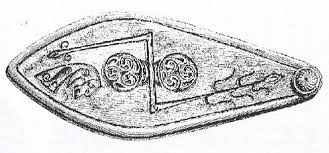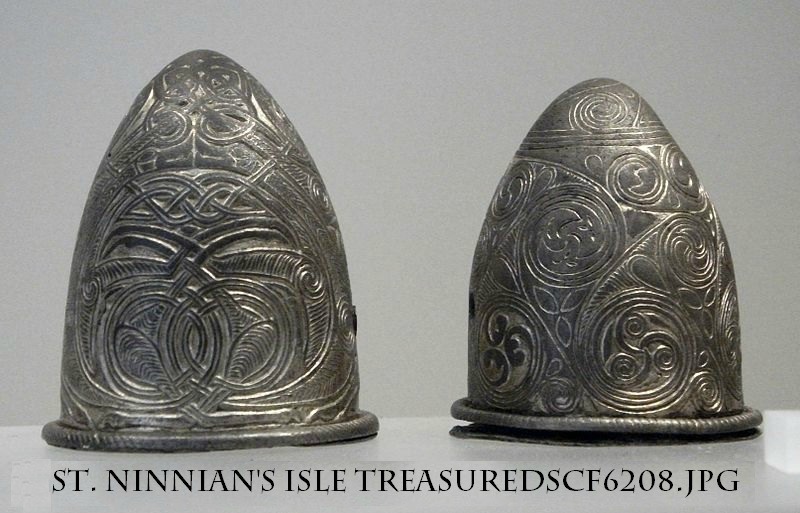Last time I mentioned that we were going to be Picky About The Picts. Would it offend you if I said that that I thought of them as just another tribe of people who lived in the UK? We believe that they were Celtic in origin, but we don’t know when they arrived or where they came from.
I have been wading through, and I do mean wading through, a considerable number of Pictish studies. As I mentioned before, the majority are focused on Standing Stones, but there are others that deal with language and origins.

English: Aberlemno Cross. The duller light shows up the intricate patterns carved on the Pictish Cross. (Photo credit: Wikipedia)
DNA studies tell us that in Ireland the Neolithic inhabitants were of Middle Eastern origin, with brown hair and brown eyes. The people that we think of as Irish, fair skinned, blue eyes, and red hair were there by the Bronze Age, and appear to have come from Eastern Europe, with about 1/3 of their genetics coming from the Pontic Steppe, an area now spread between Russia and Ukraine. But we do not have any DNA from the Picts, and there is no way to guess where they came from genetically. There is, as always, some amazing mythology.
Various myths say that the Picts came from Thrace, Scythia and Albania. Several state that the Picts had no women and therefore appealed to either the Irish or the Scots to give them women, which they did. One myth says that the Irish gave them women but then told them they needed to move out of Ireland because there was not enough room there for everyone.
The Pictish Chronicle, also called the Chronicle of the Kings of Alba, appears to date from the reign of Kenneth II (971-995). It was written in the same form as many of the Irish Chronologies. The purpose of these sort of Chronologies was to legitimize the reign of the king. They are not considered to be accurate historical documents. If you are interested in reading it, it is available online, with annotations to clarify the text.
So, where does all of this leave us? My impression is that most people would like to know what they wore, what they ate, and how they lived, not an analysis of the stylistic variations in their crosses. In fact, I know of several folks who would prefer information about pre-Christian Picts.
But how do we go about reconstructing Christian Picts must less pre-Christian Picts? Well, first of all, we can estimate that the Picts were Christianized sometime between the 500’s and 800’s AD. Being “Christianized” does not instantly change the vast majority of the details of a culture. The people are still dealing with the same environment, with the same resources. Many of the Pictish standing stones have both elaborate crosses and “traditional” symbols like the z-rod, carved into them. The article that I mentioned previously about the Pictish (700-800 AD) and Viking (800 AD) farmsteads in Orkney (which has apparently disappeared from free sources, which is why I always save pdf’s when I find them) describes this fact very well, when discussing the food remains:
“Based on a sample of about 7,000 bones overall, it would seem that there was little difference in the animal bones between Pictish and Norse periods… the proportion throughout the occupation of the site was about 50% cattle, 30% sheep and 20% pig….Bird meat does not appear to have played an important part in the diet in any phase…Fish appear to have been more important as a source of food in Norse times than in Pictish times.
Next Time: What Else Can We Figure Out?



